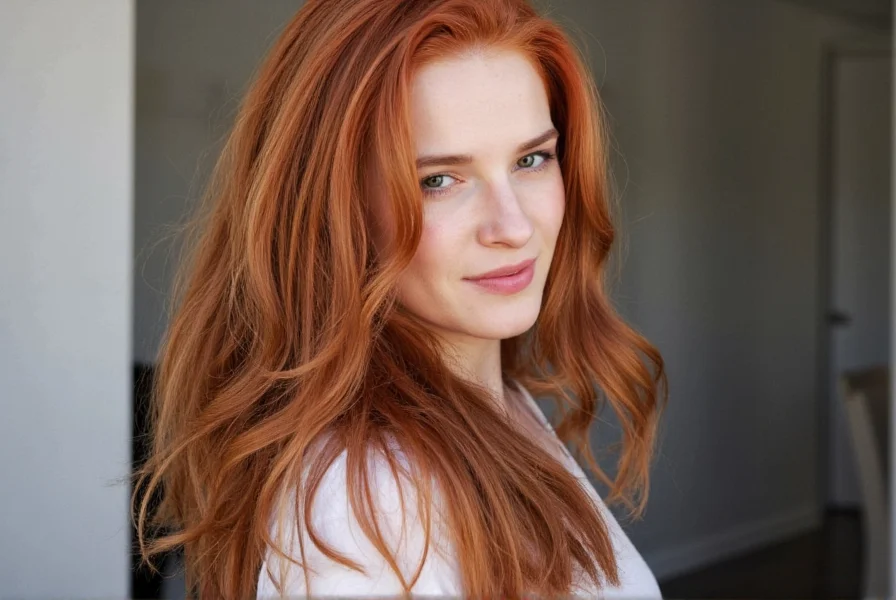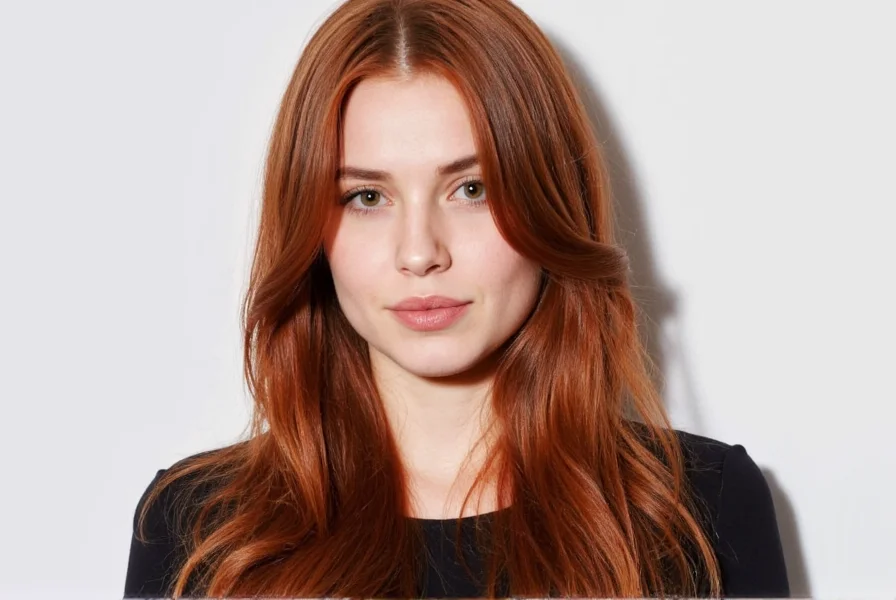Ginger brown hair color represents the perfect middle ground between traditional ginger red and standard brown hues. Unlike vibrant red tones that fade quickly, this sophisticated shade maintains its dimension while appearing naturally sun-kissed. The color typically features a base of medium to dark brown with underlying reddish pigments that become visible in sunlight, creating depth and movement.
Understanding Ginger Brown Hair Color
This distinctive shade belongs to the auburn family but with more brown dominance than classic red tones. Professional colorists describe ginger brown as having a 60-70% brown base with 30-40% red pigment, creating what's sometimes called copper brown or reddish brown hair. The specific formulation affects whether the result leans more toward warm caramel highlights or deeper mahogany accents.
Unlike temporary ginger brown hair dye options that wash out quickly, permanent formulations penetrate the hair shaft for longer-lasting color. The shade works particularly well for individuals with warm or neutral skin undertones, though cool undertones can achieve flattering results with proper formulation adjustments.
| Color Variation | Description | Best For Skin Tones |
|---|---|---|
| Light ginger brown | Medium brown base with noticeable copper highlights | Warm fair to medium |
| Medium ginger brown | Rich brown with balanced red undertones | Most warm and neutral |
| Dark ginger brown | Deep brown with subtle reddish reflections | Medium to deep warm |
| Copper ginger brown | Bright copper tones over brown base | Warm olive and golden |
Ginger Brown vs. Similar Hair Colors
Many confuse ginger brown with related shades, but key differences exist:
- Auburn features more red dominance with less brown base
- Copper hair has brighter, more metallic red tones
- Mahogany brown contains more purple undertones
- Classic ginger is significantly brighter and more orange-red
The beauty of natural-looking ginger brown hair lies in its subtlety—up close, the red tones are apparent, but from a distance, it reads as a dimensional brown. This makes it an excellent choice for professionals who want color without appearing overly dramatic.
Who Suits Ginger Brown Hair Best?
This versatile shade complements various complexions when properly matched to undertones:
For warm undertones (golden or peachy skin), medium to dark ginger brown creates a harmonious look that enhances natural coloring. Those with neutral undertones can experiment with both lighter and darker variations depending on their natural hair color. Even some cool undertones achieve beautiful results with ginger brown formulations containing ash modifiers to prevent unwanted warmth.
Eye color also influences the final appearance—hazel and green eyes particularly shine against ginger brown hair, while blue eyes benefit from slightly cooler formulations within the ginger brown spectrum.
Maintenance Tips for Ginger Brown Hair
Preserving the vibrancy of your ginger brown hair color requires specific care:
- Use sulfate-free shampoos designed for color-treated hair
- Incorporate a weekly color-depositing mask with red pigments
- Apply UV protection products before sun exposure
- Wash with cool water to prevent color bleeding
- Schedule touch-ups every 6-8 weeks for root regrowth
Water quality significantly affects ginger brown maintenance—hard water minerals can cause the color to fade toward brassy tones. Consider installing a shower filter if you notice your ginger brown hair fading faster than expected. When swimming, always wet hair with clean water first and wear a swim cap to minimize chlorine damage.
Achieving Ginger Brown Hair Color
Whether you're visiting a salon or coloring at home, understanding the process helps achieve optimal results:
For natural brunettes wanting to add ginger tones, a single-process color typically suffices. Natural blondes may require a base color application first to prevent overly bright results. Those with gray hair should consult a professional, as gray strands absorb color differently and may create patchiness.
When selecting products, look for descriptions like "copper brown," "reddish brown," or "mahogany brown" rather than pure red shades. Box dyes labeled 5.4 (medium brown copper) or 6.4 (dark brown copper) often provide good starting points for DIY coloring.

Long-Term Ginger Brown Hair Care
Sustaining beautiful ginger brown hair goes beyond initial coloring:
Regular trims prevent split ends that make color appear dull. Deep conditioning treatments maintain hair health, allowing color to reflect properly. Consider alternating between red-enhancing products and regular moisturizing treatments to prevent brassiness while maintaining vibrancy.
Seasonal changes affect how ginger brown appears—during winter months, you might notice the red tones diminishing. Counter this with more frequent color-depositing treatments. In summer, protect against sun fading with leave-in conditioners containing UV filters.
Frequently Asked Questions
Does ginger brown hair suit pale skin?
Yes, ginger brown works well with pale skin, particularly when matched to your specific undertone. Those with cool undertones should opt for darker ginger brown shades with ash modifiers, while warm undertones can choose medium to light variations. The brown base makes this shade more wearable than bright red for fair complexions.
How often should I touch up ginger brown hair color?
Most people need touch-ups every 6-8 weeks for root regrowth. The brown base makes regrowth less noticeable than with brighter red shades. For maintaining vibrancy between appointments, use color-depositing conditioners once a week. Those with faster-growing hair or more visible roots may prefer 5-6 week intervals.
Can I achieve ginger brown hair without bleach?
Yes, natural brunettes can achieve ginger brown without bleach using direct-deposit colors. Blondes may need slight lightening for optimal results, but complete bleaching isn't necessary. The brown base in ginger brown formulations means less lifting is required compared to brighter red shades, making it more accessible for various starting colors.
Does ginger brown hair turn brassy?
Ginger brown can develop brassiness if not properly maintained, especially in lighter variations. Use purple or blue-toned shampoos sparingly to counteract brassiness without neutralizing the desirable red tones. The brown base provides more stability than pure red shades, making ginger brown less prone to extreme brassiness when cared for properly.











 浙公网安备
33010002000092号
浙公网安备
33010002000092号 浙B2-20120091-4
浙B2-20120091-4